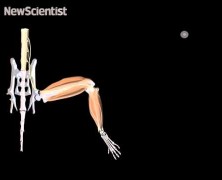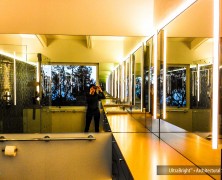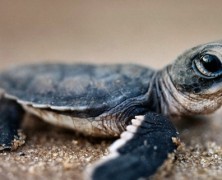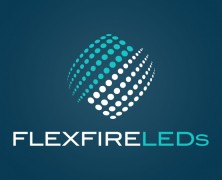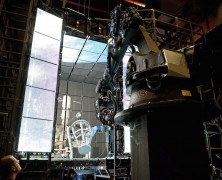Straight from the pages of science fiction, a team at King’s College in London has reversed paralysis using stem cell neurons treated with blue LED light. The trials took place in April of this year, during which scientists were able to restore muscular function in the formerly paralyzed legs of mice. The Wall Street Daily recently followed up with a report confirming the vital role that LED light played in this experiment. Additional testing is now being done to create a usable model for human trials, and time will tell if indeed LED light beats paralysis for good. The team used stem cells that contained neurons with a unique twist – a light sensitive gene that has the same biological structure as marine algae. These specially engineered cells were implanted into the exposed nerves of a paralyzed mouse, and then things really got interesting. The cells were exposed to blue LED light, and this triggered a connection between the nerve and the muscle, which essentially reverses paralysis. Scientists were able to adjust the intensity of the muscle’s contraction simply by varying the duration, intensity, and frequency of the LED light flashes. This procedure shows promise for restoring muscular function in individuals who suffer from spinal cord injuries and motor neuron diseases. Further, it is a dramatic improvement over existing paralysis treatments that use electrical stimulation, which are often painful and cause rapid muscle fatigue. In practice, this will basically be a tiny optical pacemaker that has a blue LED light built into it. The implanted pacemaker will consistently flash light onto the special neurons, thus allowing normal muscular function. The team at King’s College plans to develop this pacemaker within the next five years....
Flexfire LEDs Spring 2014 Photo Contest...
posted by Flexfire LEDs
We take pride in helping customers complete all sorts of LED lighting installations. From restaurants and hotels to basic kitchen redesigns, each project has a unique story. For this reason, we are always eager to see photographs of completed projects using Flexfire LEDs strip lights. To this end, we encourage you to participate in the Flexfire LEDs Spring 2014 Photo Contest. Every Entry Wins! We now have two separate contests, and everyone who submits a qualifying entry will win! Our standard photo contest awards prizes in each of three categories, while our new “Step-by-Step Tutorial” contest rewards those who share thorough details of their projects. Furthermore, everyone who sends us a qualifying submission for either contest will receive a coupon for $30 off any reel of Flexfire LEDs strip lights. Below you’ll find details for each of our two contests. Contest 1: Photo Contest Send us a high-resolution photograph of your completed project using Flexfire LEDs products and we’ll reward you with a coupon for $30 off any reel of Flexfire LEDs strip lights. One winner will be selected in each of these three categories: 1. Best Residential Installation (kitchens, bedrooms, bathrooms, basically anywhere in your home) 2. Best Commercial Installation (retail stores, bars/restaurants, offices, signage, etc.) 3. Best Hobby/Creative Installation (past examples include terrariums, Halloween costumes, and a flying wingsuit!) The winning project in each category will receive a FREE reel of Flexfire LEDs ColorBright strip lights. Again, please be sure to send us a high-resolution photograph, as blurred, low-quality images will not be considered. Contest 2: Step-by-Step Tutorial Contest Many of our customers see these great project photos and wonder, “How did they do that?” We’d love to share your step-by-step installation story on our blog. Everyone who submits a qualifying “Step-By-Step Tutorial” entry will receive a...
LED Lighting Installation Is Helping Save Baby Sea Turtles...
posted by Flexfire LEDs
A unique project in coastal Florida uses LED lighting to help young hatchlings avoid danger and find their way to the ocean. Led by the Sea Turtle Conservancy, the installation addresses a long-standing problem that has grown steadily worse over the past 30 years. This latest project joins human-centric and grow lights on an expanding list of fascinating biologic applications of LED lighting. As first reported in Scientific American, the installation specifically helps new sea turtle hatchlings find a direct path to ocean safety. Hatchlings typically emerge from their eggs in late afternoon or early evening, crawling up through sand from about 50 centimeters below the beach surface. They instinctively head for the soft lights on the ocean horizon, guided by moon and star reflections on the water. But this natural light is now eclipsed by the hotels, homes and restaurants that dominate today’s beachfront zones. The young turtles quickly become disoriented, often heading in the wrong direction. It’s a fatal mistake, as they can easily die of dehydration, get run over by cars or be eaten by inland predators. The situation is a significant threat to the survival of at least three endangered sea turtle species. Florida is home to 90 percent of sea turtle nesting in the U.S., and it is estimated that tens of thousands of hatchlings are lost each year. The Sea Turtle Conservancy (STC) has thus targeted this coastal area for a series of lighting retrofits aimed at reducing disorientation. So far, numbers prove that this LED lighting installation is helping save baby sea turtles. The retrofit has other benefits as well: LED lighting uses a fraction of the energy consumed by other lighting technologies, and lasts for several years with little to no maintenance costs. Further, residents and business...
Red LED Light Delays Aging in Broccoli...
posted by Flexfire LEDs
Joining similar agricultural studies around the globe, Japan’s Shizuoka University recently found that exposure to red LED light delays aging in broccoli. Researchers from the school’s Department of Biological and Environmental Sciences examined the effects of exposing broccoli to red and blue LED lighting just after harvest, and the results suggest the possibility of both extending the vegetable’s life and improving its nutritional quality. Specifically, exposure to red LED lighting was shown to delay the yellowing process, suppressing ethylene production and reducing ascorbate (AsA). Blue LED lighting did not significantly delay broccoli aging in this way. The full results were originally published in Postharvest Biology and Technology. So what does this mean for a potentially vegetable-optimized future? Will the supermarket produce section soon become a literal red light district? Might red LED kitchen lighting be the next design trend for health-conscious homeowners? Stay...
Flexfire LEDs Announces High CRI LED Strip Lights...
posted by Flexfire LEDs
In keeping with its commitment to providing innovative LED lighting solutions, California-based Flexfire LEDs has announced its new UL Listed UltraBright™ High CRI Series LED Strip Lights. Designed to meet today’s higher lighting quality standards, this new line measures >93 on the color rendering index, fortifying the company’s reputation for delivering cutting edge technology at consumer-friendly prices. CRI, or color rendering index, is the standard measure of a luminaire’s ability to accurately render a specific color spectrum in comparison with a perfect reference source at a given color temperature (i.e. daylight). Simply put, if you direct the light onto a particular object, how natural do its colors look? Testing for CRI is a complicated process, requiring specialized machinery designed specifically for this purpose. Lamps are tested in terms of how they render eight basic colors (or “R values”), termed R1 through R8. A score from 0-100 is given for each color, and these eight numbers are then averaged to determine the lamp’s overall CRI rating. Those measuring above 90 are generally considered highly effective at rendering natural color; for a practical understanding, many of the traditional fluorescent lights that people consider “harsh” or “artificial” measure in the 60-70 CRI range. LED lighting is the established industry leader in energy efficiency, and advanced technological development means LED products are now available at dramatically lower prices than even just a few years ago. This dynamic is driving a worldwide shift to LED lighting, one that is further accelerated by government regulations such as those found in California’s Title 24. Established by the State’s Energy Commission, Title 24 addresses a number of energy efficiency standards, particularly those having to do with lighting. To be classified as “High Efficacy” and thus qualify for utility rebates and other advantages,...
Gravity’s Unique LED Light Box...
posted by Flexfire LEDs
As one of its many artistic and technological innovations, the award-winning film Gravity employed an original solution to simulate the extreme lighting conditions found in outer space. Gravity’s unique LED Light Box was created by visual effects supervisor Tim Webber alongside director of photography Emmanuel Lubezki, and was critical in earning the 2014 Academy Award for Best Visual Effects. Standing 20 feet tall and 10 feet across, the Light Box featured 4,096 LED bulbs spread across 196 two-by-two foot panels. It was capable of casting nearly infinite lighting and color conditions, and images could be projected onto its walls. This served the dual purpose of properly lighting the actors inside, while also providing them with a visual reference for what their characters were seeing. In addition to providing stunning imagery, this innovative solution apparently helped enhance the actors’ performances. The film’s star, Sandra Bullock, spent a great deal of time acting alone inside of the Light Box, surrounded by projections of the sun, moon, and planet Earth. In a Digital Trends report, Bullock explained that being in the box was a creative stimulant that actually helped convey her character’s solitude. Where will LEDs turn up...






